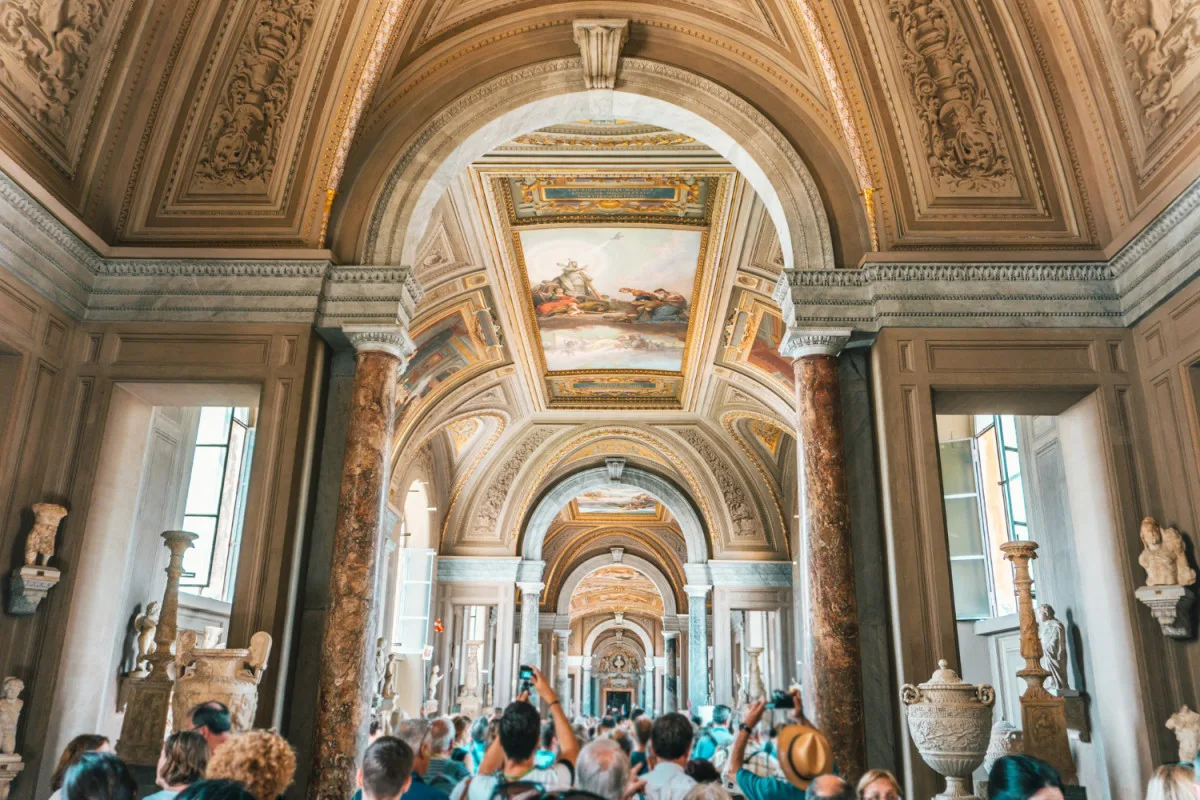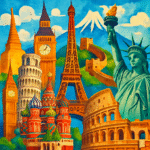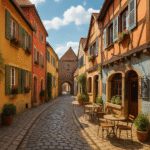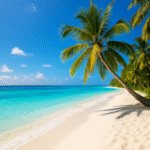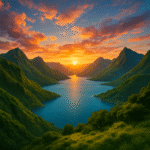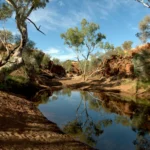Now Reading: Top 10 Interesting Facts About Iran
-
01
Top 10 Interesting Facts About Iran
Top 10 Interesting Facts About Iran

Beyond the headlines and common narratives, a land steeped in millennia of history, breathtaking beauty, and profound contributions to human civilization awaits discovery. Contemporary political discourse often influences many perceptions of Iran, potentially obscuring its true historical and cultural depth. This article aims to reframe that understanding by unveiling surprising facts that offer a richer, more nuanced view of this ancient and influential nation.
Iran, officially known as the Islamic Republic of Iran, is a fascinating country located in Western Asia. Iran boasts a multi-ethnic population of over 92 million across an expansive area of 1,648,195 square kilometers (636,372 sq mi). Consequently, it ranks as the 17th largest country globally in both geographic size and population. Its deep historical roots extend back to the Lower Palaeolithic era, firmly establishing it as a veritable cradle of civilization. In the modern era, moreover, Iran emerges as a major regional power, bolstered by vast natural resources, including the world’s second-largest natural gas supply and third-largest proven oil reserves. This article explores ten fascinating facts about the nation. These facts aim to challenge preconceived notions and offer a deeper, more appreciative understanding of this ancient and influential land.
The Top 10 Fascinating Facts About Iran
A Cradle of Civilization and Ancient Empires
Iran’s historical significance is profound. It marks the country as a true cradle of civilization with continuous human habitation since the Lower Palaeolithic period.The Medes first unified this ancient land as a political entity in the seventh century BCE. This foundational step paved the way for one of history’s most powerful empires.
The Achaemenid Empire: A Global Superpower
In the sixth century BCE, Cyrus the Great founded the Achaemenid Empire. It rapidly expanded to become one of the largest empires in history. This vast dominion stretched from northern Greece to the borders of India. It unified three pivotal sites of early human civilization: Mesopotamia, the Nile Valley of Egypt, and the Indus Valley of India. The Achaemenid Empire served as a global hub of culture, religion, science, art, and technology for over two centuries.
Darius the Great’s Unification and Legacy
Under the reign of Darius the Great (522–486 BC), the empire reached its territorial zenith. Darius was not merely a conqueror; he was an astute administrator. He unified the sprawling empire by introducing standard currency, weights, and measures, establishing Aramaic as the official language, and constructing an extensive network of roads.The distinctive court style in the art and architecture of his grand capitals at Susa and Persepolis exemplifies how cultural diversity forged a unified imperial identity.This historical period reveals a sophisticated model of imperial governance. It prioritized stability and efficiency across vast territories. The Persian Empire’s longevity and influence rooted not only in military might but also in its administrative foresight and cultural adaptability. Iran’s historical experience thus offers valuable lessons in multicultural administration and state-building, which remain relevant in modern geopolitical contexts.
Successor Dynasties and Golden Ages
After Alexander the Great defeated the Achaemenid Empire, subsequent Iranian dynasties emerged. The Sasanian Empire succeeded the Parthians in the third century CE. Many regard this era as a golden age in Iranian civilization.This era witnessed significant advancements in writing, agriculture, urbanization, religion, and administration.Literature, philosophy, mathematics, medicine, astronomy, and art flourished during the Sasanian period. Iranian Muslim dynasties later revitalized these fields during the Islamic Golden Age and the Iranian Intermezzo. They revived the Persian language and reasserted local rule
| Period | Key Figures/Events | Significance/Contributions |
| Lower Palaeolithic | Earliest habitation | Cradle of Civilization 1 |
| 7th Century BCE | Medes under Cyaxares | First unification of large part of Iran 1 |
| 6th Century BCE | Cyrus the Great (Achaemenid Empire) | Founded one of the largest empires in history; global hub of culture, science, art 1 |
| 522–486 BC | Darius the Great (Achaemenid Empire) | Empire reached territorial height; introduced standard currency, roads, official language 4 |
| 330 BC | Alexander the Great | Conquered Achaemenid Empire 3 |
| 3rd Century CE | Sasanian Empire | Considered a golden age; early developments in writing, agriculture, urbanization 1 |
| Islamic Golden Age/Iranian Intermezzo | Iranian Muslim dynasties | Revival of Persian language; end of Arab rule 1 |
| 16th Century | Safavid Dynasty | Re-established unified Iranian state; Twelver Shia Islam as official religion 1 |
| 18th Century | Afsharid Empire | Iran as a leading world power 1 |
| 1925 | Reza Shah (Pahlavi Dynasty) | Ousted Qajar Shah; attempts to nationalize oil industry 1 |
| 1979 | Ruhollah Khomeini (Iranian Revolution) | Monarchy overthrown; establishment of Islamic Republic 1 |
| 1980-1988 | Iran-Iraq War | Eight-year conflict 1 |
| Present | Islamic Republic of Iran | Major regional power; large fossil fuel reserves; 23rd-largest economy by PPP 1 |
Iran vs. Persia: A Tale of Two Names
The country known today as Iran has a dual identity. This identity roots in its ancient past and its interactions with the wider world. The term “Iran” itself derives from Middle Persian Ērān, meaning ‘the land of the Aryans.’ A 3rd-century inscription at Naqsh-e Rostam first attested this name. Iranian mythology attributes the name to Iraj, a legendary king.
Greek historians originated this nomenclature. They used Persís, meaning ‘the land of the Persians,’ a term specifically referring to the Fars province in southwest Iran.This historical distinction highlights how external perspectives can shape a nation’s naming.
However, the native population referred to their nation as “Iran” since at least 1000 BC.Reza Shah formally requested the international community to adopt the native and original name, “Iran,” in 1935. This marked a significant shift.This deliberate decision was more than a simple linguistic preference. It represented a powerful move towards national self-assertion. Iran shed externally imposed labels for a name that represented a broader, multi-ethnic identity.
Today, “Iran” is mandatory in official use. However, both “Iran” and “Persia” are culturally employed. This reflects a complex, layered national identity that embraces both its ancient, externally perceived heritage and its internally defined reality. Understanding this distinction is crucial for accurate and respectful discourse about the country. It underscores how language shapes and asserts national identity.
A Treasure Trove of UNESCO World Heritage
Iran holds an impressive standing in global heritage. It boasts a remarkable 28 UNESCO World Heritage Sites, ranking 10th highest in the world.This significant number includes iconic tangible heritage sites. Examples are the ancient ruins of Persepolis, the ceremonial capital of the Achaemenid Empire,and Naghsh Jahan Square in Isfahan. People recognize Naghsh Jahan Square as one of the largest squares globally.
Beyond its physical monuments, Iran also ranks exceptionally high, at 5th globally, in intangible cultural heritage.This category encompasses living traditions and expressions passed down through generations. People often refer to them as “human treasures.” Iran consistently ranks high in both tangible (physical sites) and intangible (living traditions) UNESCO heritage categories. This demonstrates successful physical preservation of historical sites despite centuries of change, conflict, and natural wear. It also shows the vibrant, continuous practice of its cultural traditions. This points to a deep-rooted cultural resilience. It has allowed its unique heritage to endure and gain significant international recognition. This fact directly challenges simplistic or negative perceptions of Iran. It showcases Iran’s profound and globally acknowledged cultural depth. It also positions Iran as a vital contributor to the world’s shared cultural legacy.
Cultural Nuances: From Gestures to Generosity
Navigating Iranian culture requires an understanding of its unique social customs. Some can be surprising to outsiders.
Understanding Gestures and Etiquette
A crucial cultural nuance involves gestures: the “thumbs up,” a universally positive sign in many Western cultures, is highly offensive in Iran. It is equivalent to giving the middle finger.This highlights the critical need for cultural sensitivity in cross-cultural interactions. Non-universality of body language can easily lead to misunderstandings.
Traditions of Generosity: Nazri and Kheyrât
Iranian society is also characterized by profound traditions of communal generosity and hospitality. Nazri (نذری) and Kheyrât (خیرات) are prime examples. They involve preparing massive quantities of food, such as âsh (a thick soup), sholeh zard (saffron rice pudding), and gheymeh stew. People then distribute these free of charge.This practice is particularly common during religious occasions like Ramadan or the Islamic month of Muharram. People perform it for religious merit, and many Iranians believe consuming
Nazri brings blessings.This is not merely charity; it is a communal act rooted in religious piety that actively fosters social bonds and a sense of shared community.
Daily Customs and Superstitions
Another deeply ingrained custom is returning a borrowed dish with a gift inside, even if it’s just a few flowers.This emphasizes the cultural principle of never returning an empty dish, symbolizing reciprocity and gratitude. Superstitions also play a role in daily life. For instance, people burn
espand (wild rue seeds) until they crackle. They then wave the smoke over loved ones while sending salavât (a prayer) to ward off the “evil eye” or jinxes.These rituals demonstrate how ancient belief systems are seamlessly integrated into daily, seemingly mundane actions.
For departing friends or family members, a special tradition involves preparing a tray with a Quran and a glass of water. This symbolizes pure flowing water.The traveler kisses and passes under the Quran three times for protection. As they leave, family members toss the water from the glass behind them, a gesture symbolic of ensuring their safe return.
The Unique ‘Dampâ-yi’ Culture
Finally, the distinct “dampâ-yi” (slippers) culture is an amusing yet telling detail. Iranians adhere to strict rules regarding slippers for different areas—house slippers, bathroom slippers, and outside slippers—each worn only in its respective space.This practice is so ingrained that Iranians often bring their own slippers when visiting others. Hotels in Iran provide plastic slippers in bathrooms.While seemingly trivial, these detailed rules speak to a deep cultural emphasis on cleanliness, respect for personal spaces, and distinct boundaries within the home. Collectively, these customs paint a vivid picture of a society. Social harmony, spiritual beliefs, and practical living intricately connect and reinforce each other. They offer a profound window into the values, priorities, and unique worldview of Iranian society.
Pioneering Innovations That Shaped the World
Iran’s historical contributions to global civilization are numerous and often underappreciated. Ancient Persians were pioneers in various fields, laying foundations for practices and technologies still in use today.
Ingenious Water Systems: The Qanat
Ancient Persians invented the Qanat system, remarkable subterranean aqueducts, roughly 3,000 years ago.These ingenious systems use a series of shafts and tunnels to divert groundwater through gravity. They provide drinking and agricultural water to communities. The oldest known Qanat in Gonabad still functions after 2,700 years. UNESCO recognizes the Qanat as a remarkable example of technology. It underscores the advanced engineering and sustainable practices of ancient Persians.
Foundations of Modern Mathematics: Algebra
In the realm of mathematics, the Persian mathematician Muhammad ibn Musa al-Khwarizmi invented modern Algebra around 820 CE.His seminal work, “The Compendious Book on Calculation by Completion and Balancing,” established algebra as a distinct discipline. It even provided formulas for solving quadratic equations.The very word “algorithm” is a Latinized form of his name.
Ancient Games and Leisure
Board games have ancient roots in Iran. Around 3000 BC, Iranians invented Backgammon, one of the oldest known board games in history.It predates chess.Excavations at Shahr-e Sukhteh in Iran unearthed a board game with dice and checkers from this period.Persians also invented the game of polo in 521 BC.
Culinary and Agricultural Innovations
People first domesticated the goat around 10,000 BC in Greater Iran.Persians were also at the forefront of managing nature and domesticating wild plants and animals. Archaeologists attribute the invention of wine to Persia around 5000 BC, discovered through excavations at Hajji Firuz Tepe.Persians developed ice cream around 400 BC, using yakhchals (ancient refrigerators).The cookie also originated around 700 AD.People first cultivated spinach around 500 BC, leading to its introduction in Europe.
Financial and Communication Systems
The Achaemenid period established the world’s first banking system. Governmental banks provided loans to farmers during disasters.The word “check” itself has a Persian root (Bonchaq). People used it as a document resembling money value from Achaemenid to Sasanian times.People established the “Royal Road,” the first courier post, around 500 BC.
Technological and Material Advancements
Some of the oldest bricks found to date are Persian, from around 6000 BC.Persia introduced paper to the West around 1000 AD.The Tar (lute), invented around 5000 BC, led to the development of the guitar.People invented the windmill around 700 AD.Archaeologists excavated the “Baghdad Battery” in 1936 near former Parthian and Sasanian capitals. Researchers hypothesize it was an ancient galvanic cell, possibly used for electroplating.
The sheer volume, diversity, and antiquity of these Persian inventions collectively reveal that Iran was a central and continuous hub of innovation for millennia. Many of these inventions are foundational to modern life. Yet, people often overlook or underemphasize their Persian origins in common historical narratives.
This implies a significant historical bias in how people often present global intellectual and technological progress. Persia’s role in shaping global civilization is far more profound and widespread than commonly acknowledged. This challenges Eurocentric historical perspectives and highlights the critical importance of recognizing diverse sources of human progress.
| Contribution | Approximate Date/Period | Significance/Impact |
| Qanat System | ~3,000 years ago | Sustainable water management; UNESCO recognized technology |
| Algebra | ~820 CE | Foundation of modern mathematics; “algorithm” derived from inventor’s name |
| Backgammon | ~3000 BC | Oldest known board game |
| Wine | ~5000 BC | Earliest known production |
| First Banking System | Achaemenid Period | Pioneering financial institutions and practices |
| Ice Cream | ~400 BC | Ancient refrigeration techniques |
| Polo | 521 BC | Origin of the sport |
| Cyrus Cylinder | 576-529 BC | World’s first charter of human rights |
| Windmills | ~700 AD | Early harnessing of wind power |
| Academy of Gundishapur | 271 AD | Considered the first hospital |
| Systematic Use of Alcohol in Medicine | 864-930 AD | Pioneering medical practices by Rhazes |
| “Check” (financial document) | Achaemenid to Sasanian Empire | Origin of financial instruments |
| Cultivation of Spinach | ~500 BC | Introduction to Europe |
| Royal Road | ~500 BC | First courier post |
| Guitar (Tar) | ~5000 BC (Tar), ~3,500 years ago (proto-guitar) | Influenced global music instruments |
| Baghdad Battery | Parthian/Sasanian era (excavated 1936) | Potential ancient galvanic cell |
Hormuz Island: Iran’s Rainbow Gem
Iran is home to an often-overlooked natural wonder: Hormuz Island. It is located in the Strait of Hormuz near the Persian Gulf. People affectionately call this island “Rainbow Island.” Its stunning and diverse geological formations paint the landscape with an array of vibrant colors.
The striking Red Beach greets visitors to Hormuz Island. Its sands are so rich in iron oxide that they appear a vivid red, contrasting dramatically with the deep blue waters of the Hormuz Strait Further inland, the Rainbow Valley mesmerizes with its colorful, striped peaks, evoking images of other renowned geological formations like Rainbow Mountain in Peru The Salt Goddess Cave, though unassuming from the outside, reveals a breathtaking display of rainbow colors within. It resembles polished marble and local folklore describes it as the residence of a goddess.
Beyond its natural beauty, Hormuz Island also features architectural highlights such as the contemporary Majara Residence, dome-like structures designed by Tehran-based ZAV Architects that offer panoramic views of the Persian Gulf, and the historical Portuguese Castle, a red stone fortress dating back to Portuguese colonial rule.The detailed description of Hormuz Island, with its vibrant natural features, presents an often-overlooked facet of Iran’s natural beauty. External perceptions of Iran frequently focus on political landscapes or vast deserts.
This fact directly challenges such stereotypes. It showcases a geologically unique and stunningly beautiful aspect of the country. This implies Iran possesses significant, yet underexplored, natural wonders. These could attract a different kind of global interest, such as eco-tourism or geological study. This broadens the understanding of Iran’s geographical and aesthetic appeal, promoting a more holistic and nuanced view of the country’s diverse offerings.
The Surprising Origin of “Assassin”
The term “assassin,” a word commonly associated with clandestine killers, has a fascinating and surprising origin. It roots in 11th and 12th-century Iran. It derives from the Hashishin, a group of skilled and secretive operatives who resided in Iran’s mountainous regions.This group, also referred to as the Order of Assassins, distinguished themselves. They targeted specific enemies rather than engaging in conventional, large-scale warfare. Their unique methods and exceptional skill in eliminating high-profile targets left a significant impression across the region and beyond.
Their name evolved into the modern English words “assassin” and “assassination”.The direct etymological link between a modern English word and a specific historical group operating in Iran centuries ago demonstrates how language itself serves as a historical artifact. It carries the imprints of complex, sometimes violent, historical events and cultural interactions across different civilizations. This highlights that a localized historical phenomenon in one region can have a lasting, global linguistic legacy.
This occurs even if people often simplify or lose the original context in common usage. This fact underscores the interconnectedness of global history and how cultural and political events in one region can contribute to the broader tapestry of human language.
A Land of Diverse Landscapes and Seasons
Iran is not merely a vast country; it is a land of remarkable geographical diversity and climatic contrasts.
Vast Topography and Mountain Ranges
It ranks as the 17th largest country globally. It is also one of the world’s most mountainous nations.The Iranian Plateau dominates its interior. Imposing mountain ranges such as the Zagros, Alburz, and Khorasan Mountains flank it.Mount Damavand stands within the Alburz range. It is a dormant volcano and the highest peak in Iran and West Asia, soaring to an elevation of 5,610 meters (18,406 ft).
Four Distinct Seasons and Cultural Significance
This varied topography contributes to Iran’s remarkably diverse climate. It allows Iran to experience four distinct seasons.Spring (Bahar) brings mild temperatures, blossoming flowers, and lush green landscapes. Many consider it the most pleasant season. Summers (Tabestan) are typically hot and dry, especially in central and southern regions. Coastal areas and higher elevations offer more moderate conditions. Autumn (Paeez) ushers in mild temperatures, cooling weather, and vibrant foliage. This makes it another favorable season for travel.
Winters (Zemestan) are cold, with significant snowfall in mountainous regions like Tehran. Southern parts of the country experience milder conditions.These changing seasons hold deep cultural and symbolic significance in Iranian traditions and festivities. Nowruz, the Persian New Year, for instance, precisely marks spring’s arrival. It embodies renewal and rebirth. Iran’s vast size, varied mountainous topography, distinct climate zones, and rich biodiversity create a clear causal relationship. Diverse geographical features directly enable four distinct seasons. These, in turn, profoundly influence cultural practices like Nowruz.
Rich Biodiversity
This geographical and climatic variability also supports an extensive array of plant and animal species. This includes an estimated 8,000 to 9,000 plant species (many endemic). It also supports a diverse range of animal species such as the iconic Persian leopards, Asiatic cheetahs, wild goats, Iranian red deer, and numerous migratory birds.This implies Iran’s physical environment has fundamentally shaped both its unique cultural identity and its remarkable ecological richness. This makes it a land of significant natural and cultural contrasts that defy simplistic categorization. This perspective helps dispel monolithic views of Iran as solely a desert nation. It showcases Iran’s immense ecological and climatic complexity and its deep connection to its natural environment.
The Unsung Legacy of Persian Medicine and Science
Ancient Persia played a pioneering and foundational role in the development of medicine and science. Its contributions significantly influenced global intellectual progress.
The First Hospitals and Medical Pioneers
The Academy of Gundishapur, established in 271 AD, stands as a testament to this. Many widely consider it the first hospital in history.This institution was a major intellectual center. It fostered medical knowledge and practice. Key figures from this era made monumental advancements. People credit Rhazes (Muhammad ibn Zakariya al-Razi), active between 864 and 930 AD, with the first systematic use of alcohol in medicine.His work laid crucial groundwork for pharmacology and antiseptic practices.
Foundational Texts and Pharmaceutical Advancements
Avicenna (980-1037 AD) was perhaps even more influential. His comprehensive medical encyclopedia, “The Canon of Medicine,” became one of the foundational manuals in modern medicine’s history.10 This text saw wide use for centuries in both the Islamic world and Europe. It shaped medical education and practice.
Beyond Medicine: Astronomy and Mathematics
Persian polymaths also excelled in other scientific disciplines. Omar Khayyam (1048-1131 AD), renowned for his poetry, was also one of the greatest polymaths of all time. Beyond his significant contributions to laying algebra’s foundations, he presented a theory of heliocentricity to his peers. This demonstrated advanced astronomical understanding long before the West widely accepted it. Iranian scientists directly established Algebra, advanced Medicine and Chemistry, and discovered Trigonometry.
The combined evidence paints a compelling picture of ancient and medieval Persia as a leading intellectual and scientific center. This evidence includes the first hospital, systematic medical alcohol use, foundational medical texts, and significant advancements in astronomy and mathematics. This period demonstrates that Iranian scholars did not merely preserve ancient knowledge.
They actively expanded it. They made original contributions that served as crucial cornerstones for later global scientific development, particularly influencing the European Renaissance.This implies Persia was a vital bridge in transmitting and advancing scientific knowledge between ancient civilizations and the modern world. Its contributions are far more fundamental than people often recognize. This fact highlights Iran’s profound historical significance as a major intellectual powerhouse, contributing foundational concepts and practices that underpin modern science and medicine.
A Global Powerhouse in Natural Resources and Influence
Iran stands as a major regional power. Immense natural resources and a strategically significant location largely drive its status.
Abundant Natural Resources
The country possesses vast fossil fuel reserves. It holds the world’s second-largest natural gas supply and the third-largest proven oil reserves.Beyond hydrocarbons, Iran is also rich in other vital natural resources. These include copper, iron ore, and chromium. All play a significant role in its economy.
Strategic Geopolitical Location
Its location at the crossroads of Asia and the Middle East further amplifies Iran’s geopolitical significance.This strategic position, combined with its military capabilities, cultural influence, and regional sway, solidifies its role as a key player in international affairs.Furthermore, Iran holds a unique position as the world’s focal point of Shia Islam. This contributes to its cultural hegemony and influence across the region.Economically, Iran is robust. Its economy ranks as the world’s 23rd-largest by Purchasing Power Parity (PPP).
Active Role in International Organizations
The nation is also a long-standing and active member of various international organizations. This reflects its engagement on the global stage. It is a founding member of the United Nations (UN), the Organization of Islamic Cooperation (OIC), the Organization of the Petroleum Exporting Countries (OPEC), and the Economic Cooperation Organization (ECO). Additionally, Iran is a current member of the Non-Aligned Movement (NAM), the Shanghai Cooperation Organisation (SCO), and BRICS.
Iran’s vast natural resource wealth, strategic geopolitical location, and active participation in major international organizations collectively underscore its multifaceted influence on the global stage. This combination of factors positions Iran not merely as a regional player. It positions Iran as a nation with substantial global leverage in energy markets, international diplomacy, and cultural spheres. This understanding moves beyond a simplistic view of Iran. It reveals Iran’s complex role as a significant global actor whose decisions and developments have far-reaching implications.
Conclusion
Exploring these ten fascinating facts about Iran reveals a nation far more complex, historically rich, and culturally vibrant than people often portray. The distinction between “Iran” and “Persia,” the sheer volume of its UNESCO World Heritage Sites, and the intricate tapestry of its social customs all highlight a society. This society is deeply rooted in its past yet dynamically evolving.
The groundbreaking contributions of Persian scientists and thinkers in fields ranging from mathematics and medicine to engineering underscore an intellectual legacy. This legacy has profoundly impacted global knowledge. Furthermore, Iran’s diverse geography and immense natural resources position it as a major geopolitical force. It plays a significant role in the world’s energy landscape and international relations.
Understanding these multifaceted aspects is essential for a comprehensive appreciation of Iran’s enduring legacy and its contemporary significance. This journey through its history, culture, and contributions challenges preconceived notions. It invites deeper engagement with a nation that has contributed immensely to the shared human story. To truly grasp this ancient land’s essence, one must look beyond superficial narratives. Delve into the rich layers of its profound heritage.











